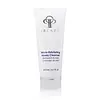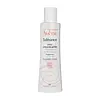What's inside
What's inside
 Benefits
Benefits

 Concerns
Concerns

 Ingredients Side-by-side
Ingredients Side-by-side

Water
Skin ConditioningCocamidopropyl Betaine
CleansingSodium Lauryl Sulfoacetate
CleansingSodium Methyl 2-Sulfolaurate
CleansingCera Alba
EmollientCopernicia Cerifera Wax
Acrylates Copolymer
Glycerin
HumectantHoney
HumectantSodium Chloride
MaskingCaprylyl Glycol
EmollientDisodium 2-Sulfolaurate
CleansingHexylene Glycol
EmulsifyingBenzyl Benzoate
AntimicrobialAminomethyl Propanol
BufferingPotassium Sorbate
PreservativeSodium Benzoate
MaskingParfum
MaskingCoumarin
PerfumingWater, Cocamidopropyl Betaine, Sodium Lauryl Sulfoacetate, Sodium Methyl 2-Sulfolaurate, Cera Alba, Copernicia Cerifera Wax, Acrylates Copolymer, Glycerin, Honey, Sodium Chloride, Caprylyl Glycol, Disodium 2-Sulfolaurate, Hexylene Glycol, Benzyl Benzoate, Aminomethyl Propanol, Potassium Sorbate, Sodium Benzoate, Parfum, Coumarin
 Reviews
Reviews

Ingredients Explained
These ingredients are found in both products.
Ingredients higher up in an ingredient list are typically present in a larger amount.
Caprylyl Glycol is a humectant and emollient, meaning it attracts and preserves moisture.
It is a common ingredient in many products, especially those designed to hydrate skin. The primary benefits are retaining moisture, skin softening, and promoting a healthy skin barrier.
Though Caprylyl Glycol is an alcohol derived from fatty acids, it is not the kind that can dry out skin.
This ingredient is also used as a preservative to extend the life of products. It has slight antimicrobial properties.
Learn more about Caprylyl GlycolSodium Benzoate is a preservative. It's used in both cosmetic and food products to inhibit the growth of mold and bacteria. It is typically produced synthetically.
Both the US FDA and EU Health Committee have approved the use of sodium benzoate. In the US, levels of 0.1% (of the total product) are allowed.
Sodium benzoate works as a preservative by inhibiting the growth of bacteria inside of cells. It prevents the cell from fermenting a type of sugar using an enzyme called phosphofructokinase.
It is the salt of benzoic acid. Foods containing sodium benzoate include soda, salad dressings, condiments, fruit juices, wines, and snack foods.
Studies for using ascorbic acid and sodium benzoate in cosmetics are lacking, especially in skincare routines with multiple steps.
We always recommend speaking with a professional, such as a dermatologist, if you have any concerns.
Learn more about Sodium BenzoateWater. It's the most common cosmetic ingredient of all. You'll usually see it at the top of ingredient lists, meaning that it makes up the largest part of the product.
So why is it so popular? Water most often acts as a solvent - this means that it helps dissolve other ingredients into the formulation.
You'll also recognize water as that liquid we all need to stay alive. If you see this, drink a glass of water. Stay hydrated!
Learn more about Water